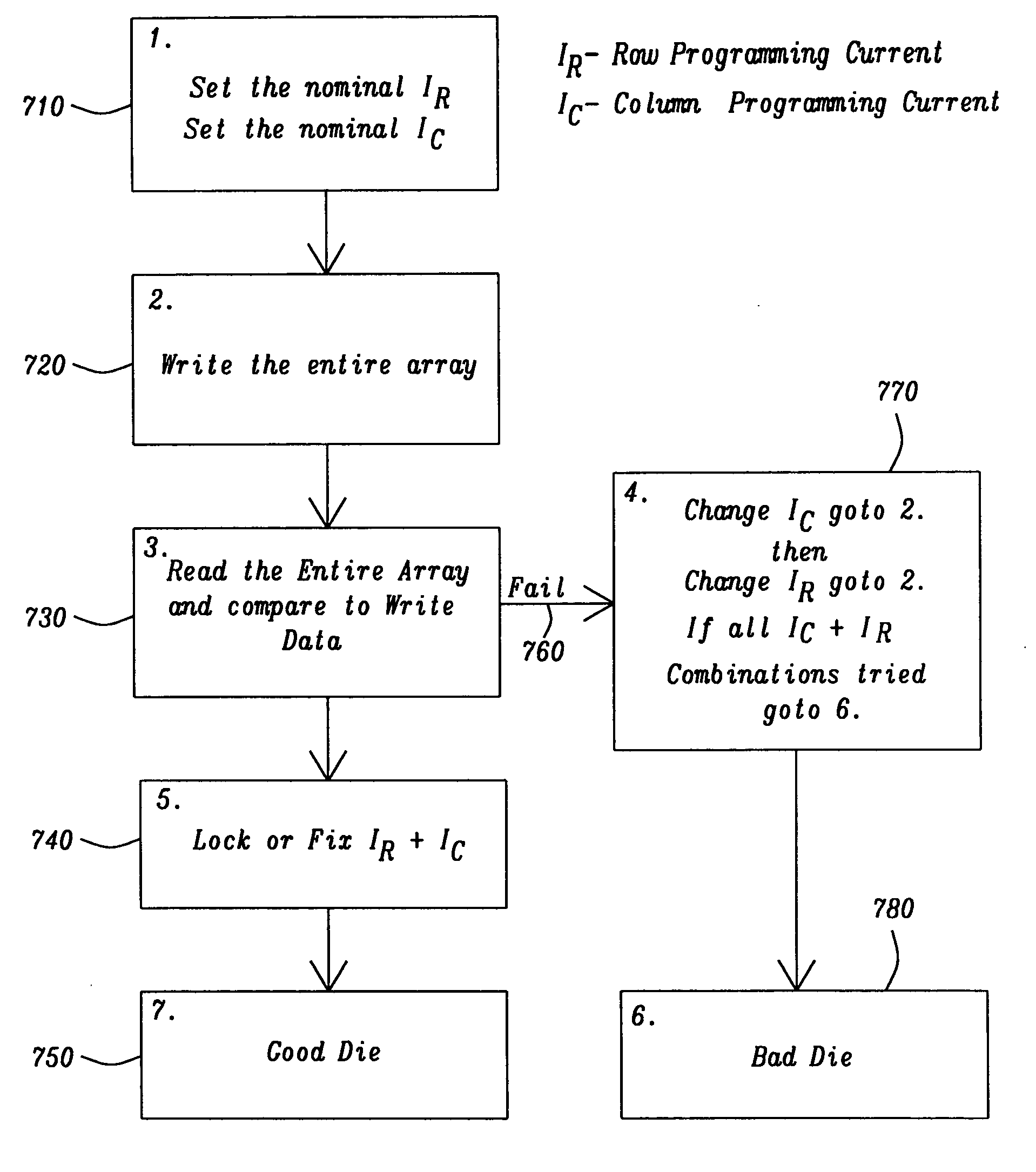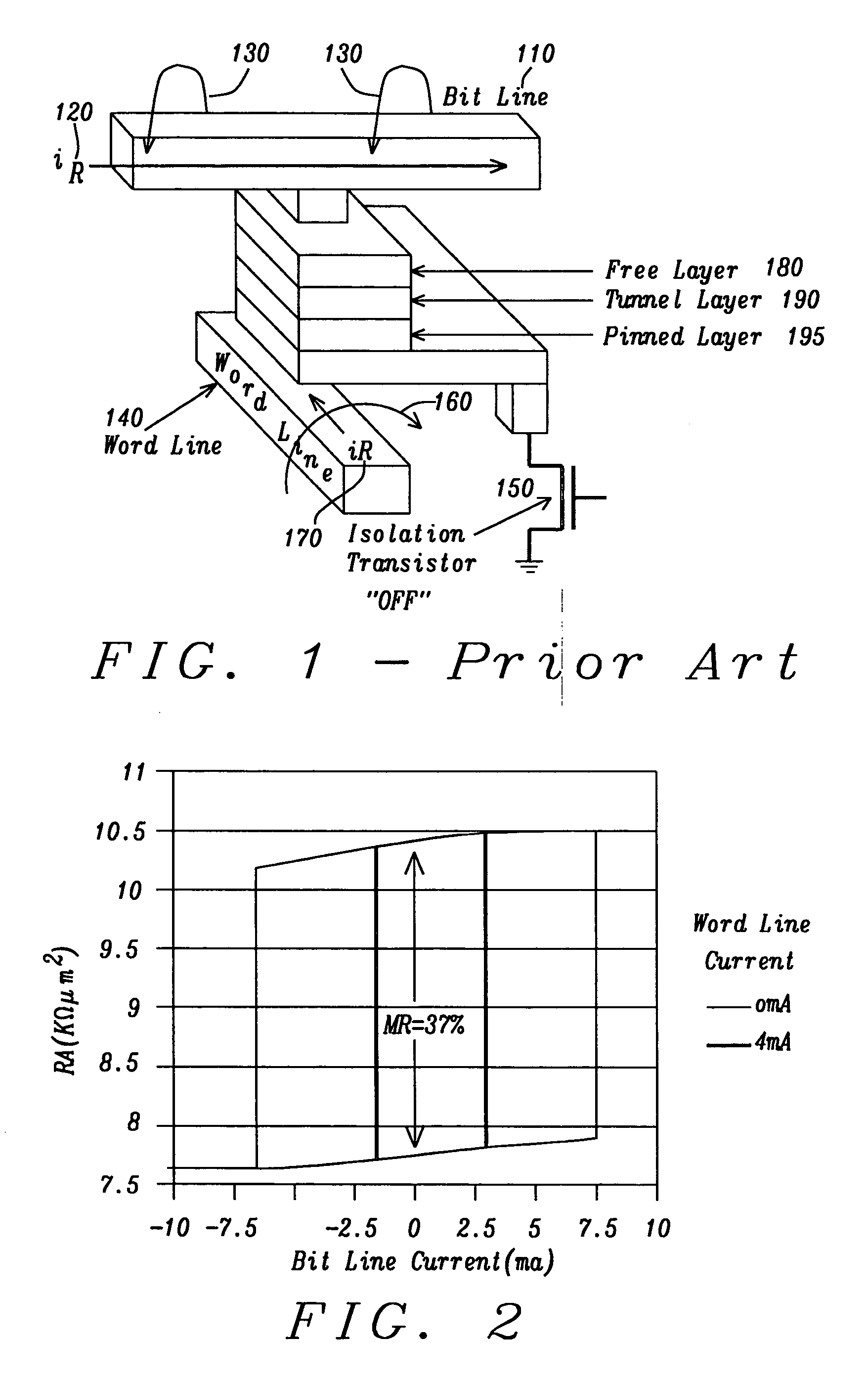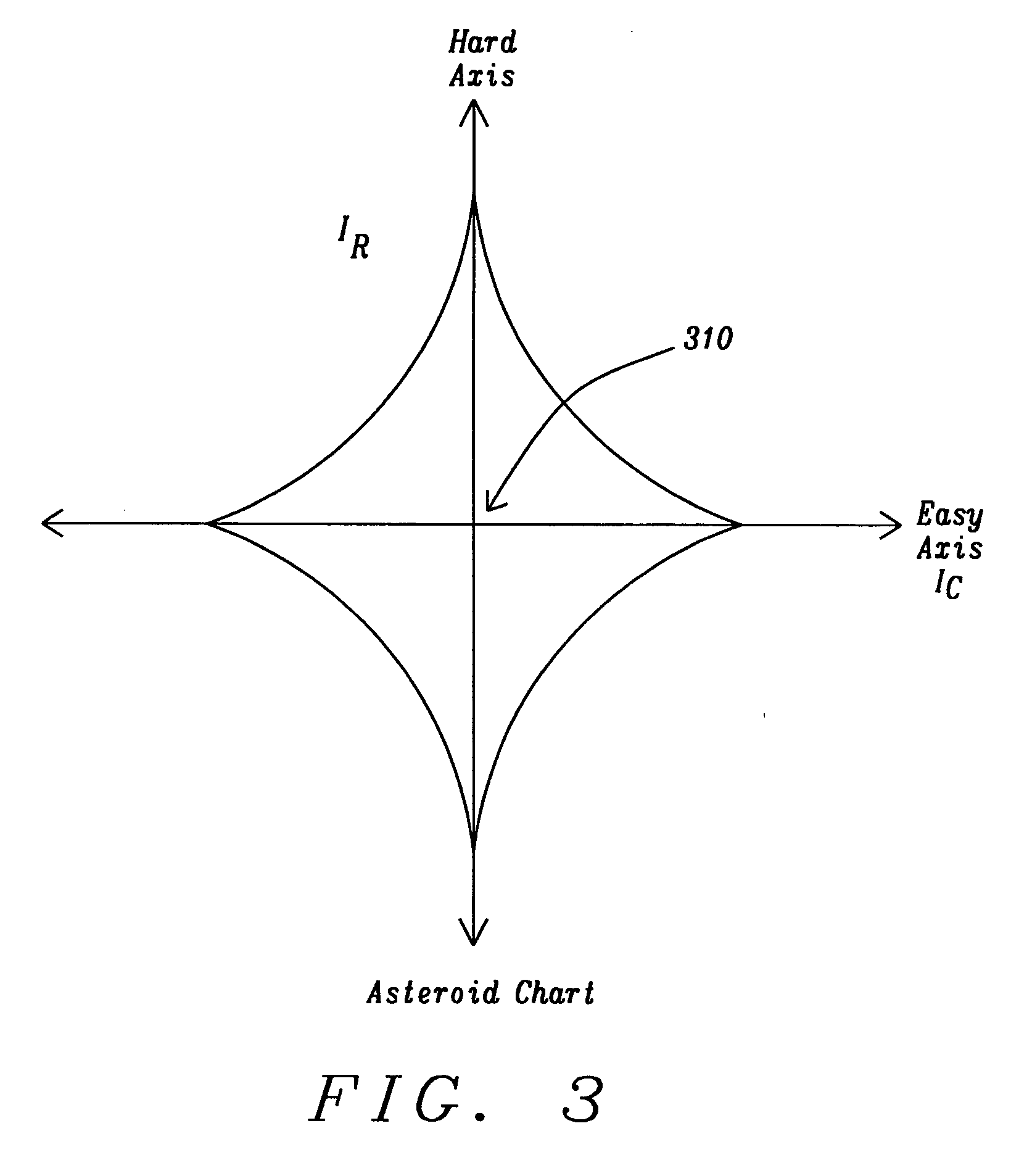Adaptive algorithm for MRAM manufacturing
a technology of mram and manufacturing, applied in the field of mram random access memory (mram), can solve problems such as negative comparison and mismatch failur
- Summary
- Abstract
- Description
- Claims
- Application Information
AI Technical Summary
Benefits of technology
Problems solved by technology
Method used
Image
Examples
first embodiment
[0030]FIG. 7 shows this invention which is a method for programming and testing an MRAM memory array with adaptive row and column programming current. The first step 710 is to set an initial nominal row programming current, IR, and an initial nominal column programming current, Ic. Using these initial programming currents, all of the magnetic memory array cells are written 720. Next, all of the magnetic memory array cells are read back and compared to the cell values previously written 730. If all of the comparisons between the memory cell data Read and the memory cell data previously written pass 765, the method continues by locking in or fixing IR and Ic 740. Also, the method flow ends by signaling a good die 750. If any of the comparisons between the memory cell data Read versus the memory cell data previously written fail 760, a branch to a step to change the adaptive column current of the adaptive row current is taken. The column or row programming currents are changed until al...
second embodiment
[0031]FIG. 8 shows this invention, which is a method for programming and testing a random byte within a memory array with any combinations of adaptive row and column currents. The first step 810 is to set an initial nominal row programming current, IR and an initial nominal column programming current, Ic. The next step is to save the byte being programmed 820. Next, all of the programmed bytes on the same column as the byte being programmed (BBP) are read and saved 830. Next, the method programs the byte being programmed 840. Then, the byte being programmed in 840 is read back and compared to the original saved BBP data 850. If the comparison passes 866, the method reads the programmed bytes on the same column as BBP 880 and compares these read bytes with the previously-saved programmed bytes on the same column as BBP 880. If this comparison passes 895, the method ends by signaling 885 that it successfully programmed the BBP without disturbs the other bytes on the same column as BBP...
third embodiment
[0035]FIG. 9 shows this invention, which is a method for programming an entire memory array with random combinations of adaptive row and column programming currents. The first step 910 sets the byte being programmed (BBP) to the start address of the array. Next, with this BBP the method calls the previously defined method or flow described in FIG. 8. FIG. 8 is the method of programming and testing a single random byte within a magnetic memory array. After completing the successful writing of the BBP, the flow in FIG. 9 goes to 930, which checks if BBP is the last address of the memory array being programmed. If the result of this decision block 930 is ‘Yes’, the flow signals a Good Memory array or sub array and ENDS the flow. If the result of this decision block 930 is ‘No’, the BBP is incremented 950 and the flow goes to 920, which is a repeat of Test flow 2 as shown in FIG. 8 with the new BBP. In this manner, an entire memory array or sub array is programmed and tested using the t...
PUM
 Login to View More
Login to View More Abstract
Description
Claims
Application Information
 Login to View More
Login to View More - R&D
- Intellectual Property
- Life Sciences
- Materials
- Tech Scout
- Unparalleled Data Quality
- Higher Quality Content
- 60% Fewer Hallucinations
Browse by: Latest US Patents, China's latest patents, Technical Efficacy Thesaurus, Application Domain, Technology Topic, Popular Technical Reports.
© 2025 PatSnap. All rights reserved.Legal|Privacy policy|Modern Slavery Act Transparency Statement|Sitemap|About US| Contact US: help@patsnap.com



